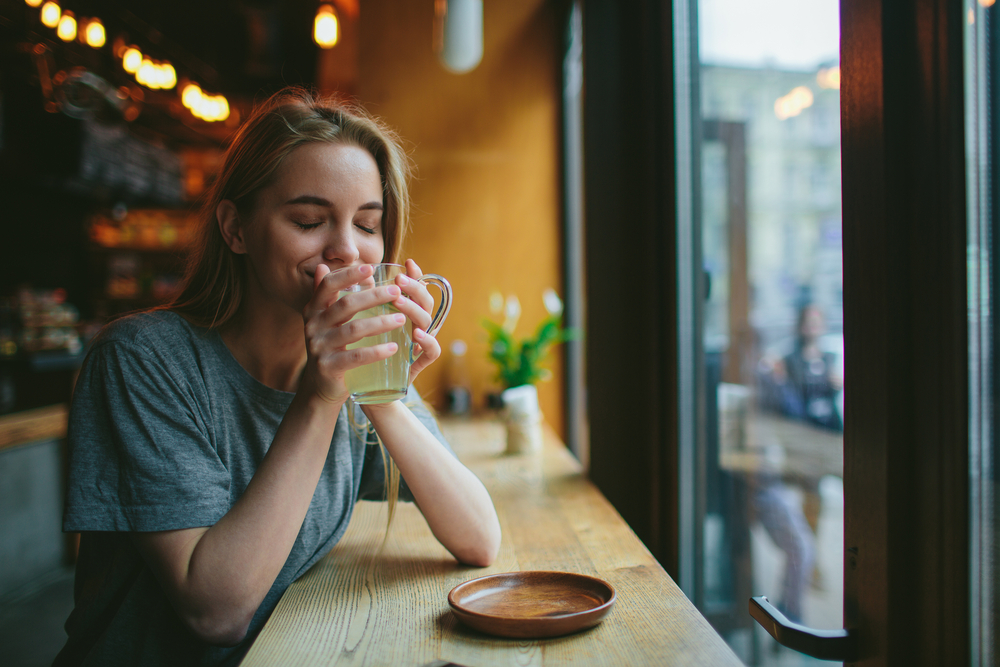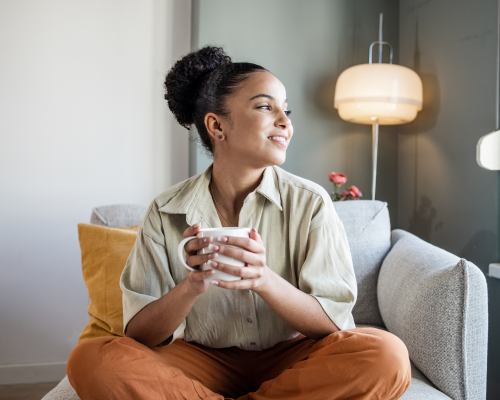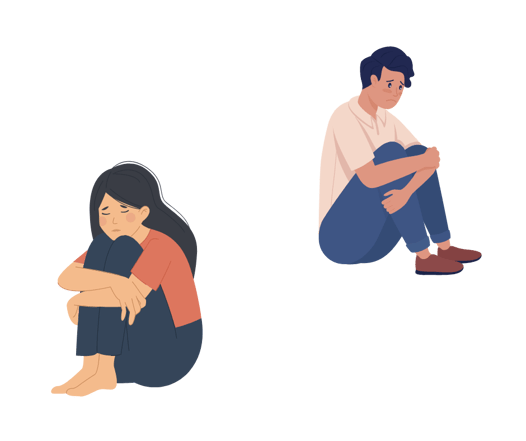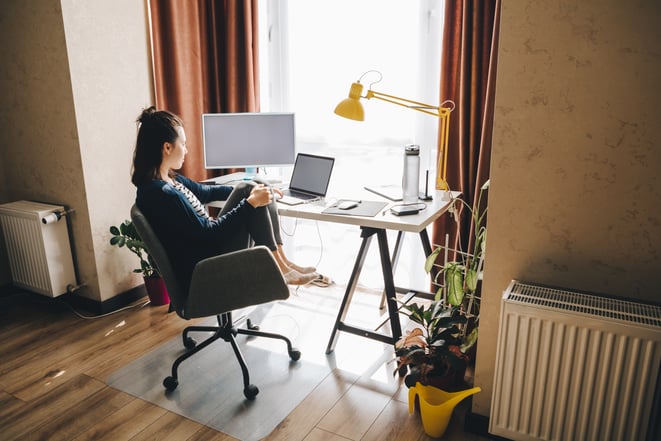
‘New normal’, ‘COVID normal’, ‘better normal’…. all phrases that have well and truly passed their used by date. There is no normal way to do life and most things in our life we are experiencing for the very first time. So, what is normal anyway, and in the rush back to normal, have we considered what we are rushing back to?
By definition, the word normal refers to the usual, typical, or expected state or condition. Based on this, it is safe to say that COVID has been anything but normal. After the initial shock of the pandemic, followed by years of multiple lockdowns, restrictions and adjusting to the complete change in lifestyle we now see ourselves at the other end. So, what if adjusting back to reality is not as comfortable or as easy as we thought it would be? The good news is, this is a natural feeling. This feeling of struggling to reintegrate can be compared to a concept called ‘reverse culture shock’.
Let us take a ride on the Corona-Coaster!
As a general rule the human brain hates change, we crave certainty and routine. When we first went into isolation, we experienced heightened anxiety about the many unknowns of COVID and the huge change in lifestyle we were all forced to make. Once we settled into some routine, got comfortable with being at home, and potentially even enjoyed slowing down, the initial culture shock eased, and we found a level of acceptance around the situation we were in (despite some ups and downs along the way).
Then came the 6-month slump. When we hit the 6-month mark of living under extremely limiting restrictions we all felt pretty worn out (fellow Melbourne friends, I’m talking to you). This can largely be put down to living in survival mode for an extended period while under the cloud of what we can call ‘sustained three-fold stress’. Put simply, the combination of COVID stress, financial stress and trauma/grief related stress was a recipe of disaster, and resulted in a continuous state of fight, flight or freeze – keeping in mind this is only meant to be a temporary state.
As a result of sustained stress and long-term boredom, something quite interesting happened. Who recalls that moment when your motivation was at an all-time low and the thought of even getting off the couch was too much? Well, here’s why. Deep within our lower brain lies our ‘seeking system’, one of our seven major emotional tendencies of the brain. Our seeking system is responsible for us feeling alive, alert and for seeking experiences. This is related to our motivated actions linked to survival and desires. To be healthy and happy as humans, we need to be active, searching for understanding and seeking and engaging in experiences.
But no surprises here, COVID shut down our seeking system, just like it shut down everything else. With nothing to be motivated for and no forward momentum we became drained, frustrated, irritable and angry – hence the slump in motivation.
Importantly, that slump in motivation may linger and take a while to increase again. So, what does this mean for re-integration?
Reverse culture shock can be shocking
After two years in and out of lockdowns, we got the news we had all been waiting for…. ‘life can go back to normal’, YAY!… or nay? Some of us were extremely excited and booking a table at the local restaurant within minutes of the latest announcements, while others had this anxious feeling and almost started to grieve their COVID lives. This can largely be put down to a couple of things - our personality type and the concept of reverse culture shock.
Our default personality type can influence how we adjust to change and life experiences in general, which became quite obvious during the pandemic. Although this is not black and white, understanding your personality type can provide some helpful insight into how you coped with the pandemic, but also how you will cope with reintegration.
If you lean more towards extroverted personality traits, working from home, limited social gatherings and lockdown may have been your worst nightmare. You were also likely first in line at your favourite restaurant. Those in the introvert camp quite possibly enjoyed the quieter life and loved being at home more often, with the thought of social engagements, commitments and the world opening again maybe feeling overwhelming. Ambiverts usually sit somewhere in the middle and a balance of both worlds is ideal. The key here, is to have self-awareness about how your personality influences your ability to adapt and be kind to yourself in your expectations and boundaries.
Now, here comes the interesting part. Following the joy of getting some freedom back, the reality of getting back to life became exactly that, real. The term ‘reverse culture shock’ or ‘re-entry syndrome’ has popped up recently and was originally coined by Clinical Psychologists back in the 1960’s. Reverse culture shock is the emotional and psychological distress suffered by some people when they return home after a number of years overseas. This can result in unexpected difficulty in readjusting to the culture and values of the home country, now that the previously familiar has become unfamiliar.
Clinical Psychologist Dr Kimberley Norris who assesses the mental health of Australian’s on Antarctic expeditions advises that following the initial ‘reunion’ comes reintegration, which can be just as severe as adapting to the culture shock of travel. It is like that ‘I need a holiday after my holiday’ type feeling.
In the context of COVID this makes perfect sense. Our pre-COVID lives which were once so familiar, now seem unfamiliar and this will take some adjusting. So, how do we cope, and how do we decide what we keep as a result of the pandemic and what we leave behind with that 10,000 piece puzzle we never started?
Three tools to cope with reintegration
Getting back into life again could be a hard slog. If we can accept this and take the pressure off ourselves to bounce straight back, this will go a really long way. There are however three ingredients in our control that may be helpful when it comes to coping with reintegration.
Tool one: Understand your locus of control
Our locus of control refers to our natural tendency to focus on either things that are in or are out of our control. The great thing about our own mindset however, is that we are in complete control of it. Throughout the pandemic, a lot of control was taken away from us. As that control starts to come back, it can feel a little strange and we may even find ourselves doubting our decisions or struggling to make them altogether.
When we focus on things that are in our control (internal locus), the impact on our overall wellbeing is more positive with lower perceived stress. However, when we focus on those things outside of our control (external locus), our mindset and mood can become quite negative, with higher perceived stress.
So as you navigate reintegration and you find yourself feeling flustered or your stress levels are heightened, this is your opportunity to catch yourself, ask yourself the question ‘is this something that is in my control?’ and pivot your thoughts as necessary.
Tool two: Personalise the mental health continuum
When we accept that our mental health and wellbeing will naturally fluctuate across our lifetime, the peaks and troughs can become easier to deal with. This fluctuation is often referred to as the mental health continuum. Some of us struggled with our mental health for the very first time during COVID. It can also sneak up on you if you are not in tune with how you respond to challenging times beyond COVID. Having an awareness of your own responses as you move through the continuum, and knowing your personal markers or habits that indicate your wellbeing has shifted or declined is a skill worth mastering when it comes to managing your overall wellbeing.
We like to ask ourselves the question ‘on a scale of green tea to donuts – how am I coping?’. When we are feeling our absolute best, we may be drinking green tea, exercising daily, eating well and being social. When our mental health and wellbeing is declining, you guessed it, we may be craving donuts (sugar), our exercise routine takes a hit and being social is too much effort. The point here, is that whatever your version of these habits are, they can indicate where your wellbeing is currently at. These flags tell you that you may need to bolster your wellbeing or up the ante on your self-care routine.
That is not to say that these habits or behaviours should never happen. Sometimes we need to allow ourselves to grieve or wallow. It is important however, to not allow these non-positive habits to linger. Give yourself the time you need and then invest back into your own self-care to help you cope when you are ready.
Tool three: Leverage consistency instead of motivation
The very nature of motivation is that it fluctuates, which makes it a very unreliable tool when it comes to driving action. It is also very easy to lose motivation during difficult times, so if we rely on motivation to maintain our wellbeing, we are setting ourselves up to fail. We know that staying physically well requires work and effort, and the same goes for our mental wellbeing. Self-care succeeds if it is consistent and we approach it with conscious effort. So how do we make self-care an ongoing priority once we get busy again and our motivations shift?
When we cannot rely on motivation, we need to form habits and routines to keep ourselves in check. No doubt while we were all in isolation, we prioritised reading, baking, home workouts, bike rides and a range of other things that made us feel good. For some of us COVID gave us more balance, helped us slow down and forced us to prioritise self-care, but in the rush back to normal, it is important to remind ourselves that we have a choice in what our lives look like, how much balance we have and the emphasis we place on self-care.
As we begin to reintegrate, scheduling in and accounting for your own wellbeing time will serve you well and is within your control. Ensure you have a mix between social, fun, work, learning, exercise and down time and don’t let these habits slip. Research tells us that when we form a habit, the behaviour becomes more automatic and less effort - and the best part, there is a positive impact on your wellbeing. We encourage you to value yourself enough to prioritise this – and if that means sleeping in your exercise gear to ensure you go to the gym in the morning, then do it.
Your normal is different to others
In forgetting the word normal as we get back to real life, let us remember that everyone’s circumstances and experiences in life and in the pandemic are different – there is no ‘normal’. Be mindful and be kind in recognising how each person in your network reintegrates into the world and the boundaries that go along with that. If you are not ready to go out for a group dinner… don’t. If you are not ready to have visitors at your house after it’s been ‘your space’ for the past eight months…. don’t. If you are not ready to get back to all your old overwhelming commitments… don’t. Slow and steady wins the race and you owe it to yourself to value your own boundaries as you find what ‘normal’ looks like for you again.







